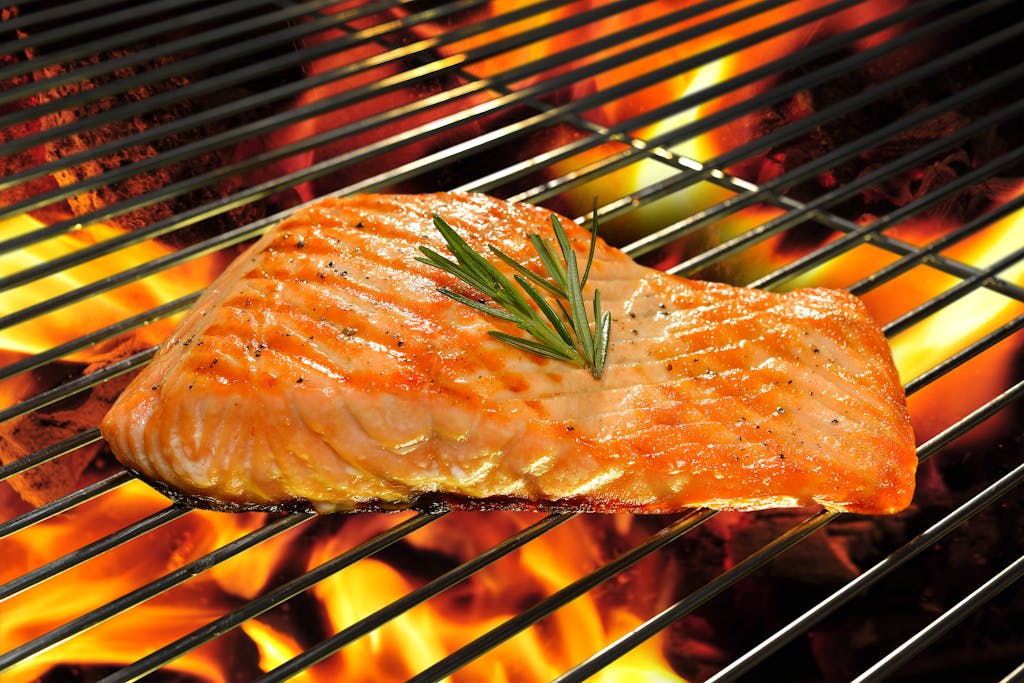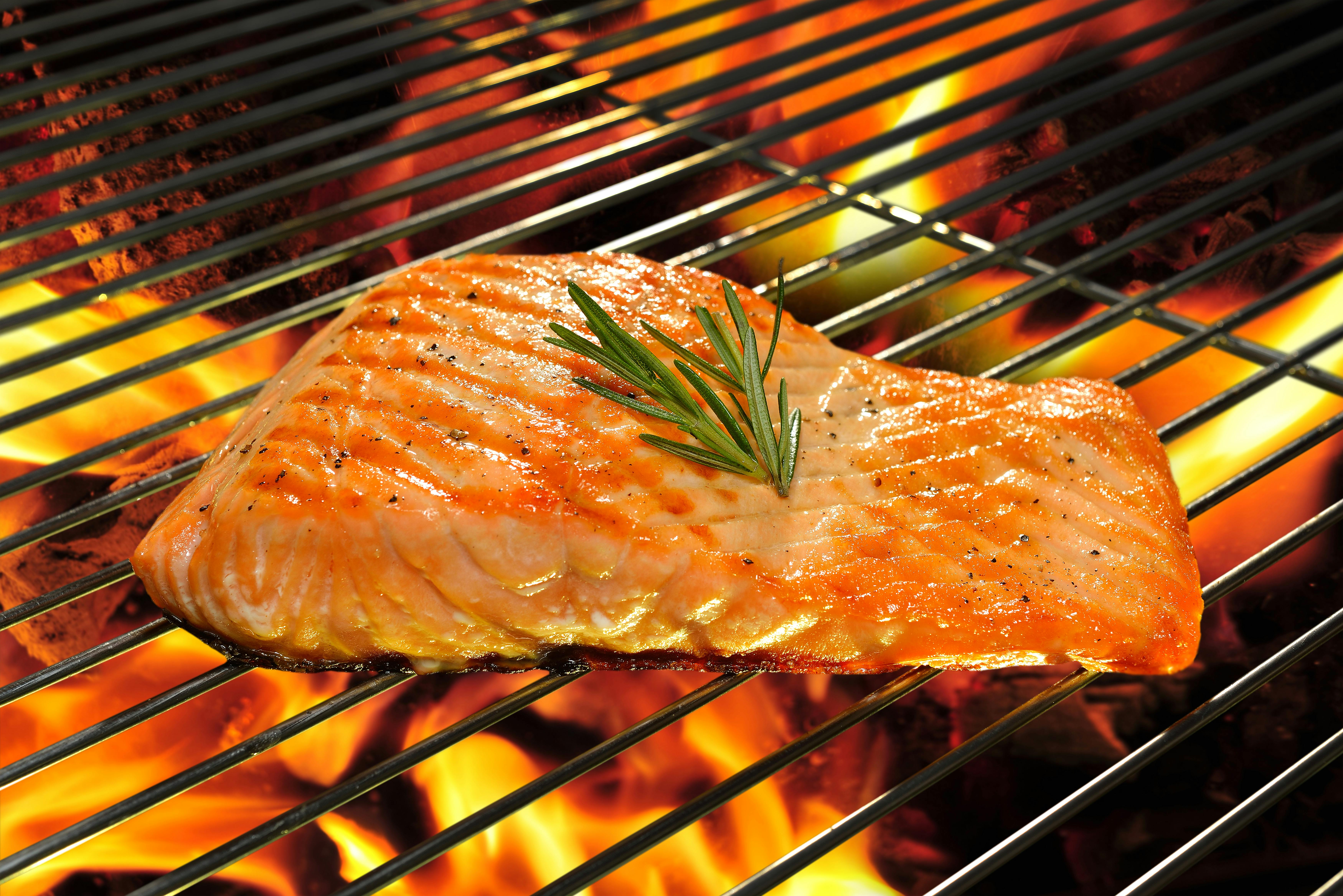Celebrate the Fabulous Fresh Fish off the Alaskan Coast with This Salmon Recipe
Salmon simply steals my heart. More accessible than Brad Pitt — all right, so maybe a bone-in, skin-on whole fish is a better analogy — salmon is as easy-peasy to cook as scrambled eggs. I don’t have any one favorite salmon recipe, because there are so many ways to cook it. Surely my adoration also stems from its versatility: bake, broil, sauté, poach, or grill this affable fish to astonishing success.
My fan club leader status stems from one Alaskan cruise years ago, when I boarded a float plane from Juneau to Taku Glacier Lodge for an iconic salmon feast. The cook basted wild salmon with a blend of lemon juice, brown sugar, white wine, and melted butter while grilling it over alder wood in a forest clearing. So fresh, so velvety delicious, I downed two huge fillets in minutes. I couldn’t eat salmon for two years afterwards; I felt spoiled for life.
Back home, I eventually found one salmon recipe that reminds me of that Alaskan feast. The late great chef Charlie Trotter created it — one reason why his namesake Chicago restaurant earned accolades worldwide. He cooked salmon at an incredibly low temperature, 225 degrees Fahrenheit (about 110 Celsius), resulting in an entirely different fish from what we ate prior. Its color turns pink-cheek rosy like a five-year-old skipping rope (or, if cooked rare, imagine a deep blush), and its flesh turns as velvety as plush theatrical drapes — so similar to my Alaskan revelation. This salmon is a joy to behold and even better to devour.
Trotter played with many variations of his low-and-slow roasting method. Sometimes he fashioned a bed of celery sticks on the pan bottom as a salmon rack. When the fish was cooked, he diced the celery and folded it into an accompanying red wine risotto. Other times, he placed salmon over sautéed carrots and celery (giving them a head start to cook at such a low temperature), and then buried the fish in freshly sliced lemon and dill, or fresh thyme.
Salmon, your way
But forget Charlie, forget me; make this recipe your own. Cooking the salmon at 225 F. is the only steadfast rule. You can even try the Taku Glacier Lodge baste I mentioned above. I improvise on a weekly basis, depending on which herbs in my garden are flourishing, or on the current condiments in my fridge.
Sometimes I zest fresh lemon over fillets and sprinkle with fresh-snipped dill. Other times, I brush salmon with Dijon mustard, then add a dash of low-sodium soy sauce and a drizzle of Runamok pecan-smoked maple syrup. (Runamok syrups are superb.) Ginger root or smoked chili-pepper infused maple syrup also works well with salmon or other savory dishes.
To score an Asian vibe, I turn to fresh lime juice and zest, low-sodium soy, freshly minced ginger and a fistful of cilantro. For an Italian riff, I lean on fruity olive oil, aged balsamic, vermouth or white wine splash, and fresh or dried oregano. Feel free to roam the world for seasoning — use Moroccan tajine spicing and brush with harissa, or Indian masala blends, for instance.
Remember, salmon is like a best friend; it makes you look good and forgives nearly any mistake you make. Play it as Yo-Yo Ma plays the cello, exploring influences from other cultures, allowing its rich full notes to grace a room. In this case, it’s the dining room — although if you’re cooking salmon for a concert hall, the following recipe is still your ticket to applause. It’s so foolproof when cooked for a crowd, it still delivers.
Don’t fret if you pull the salmon from the oven a few minutes late — maybe you can’t tactfully leave your guests at the precise moment the timer beeps — it’ll still deliver a taste epiphany. Salmon, we salute you, for making home cooks look so darn good.
Slow-Roasted Salmon Recipe

Ingredients:
- 1 whole organic lemon, preferably Meyer
- 4 six-to-eight ounce salmon fillets, wild or sustainably farmed
- 2 tablespoons Dijon mustard
- 2 teaspoons pecan-smoked or other maple syrup
- Low-sodium soy sauce, to taste
- Salt, to taste
- Freshly ground pepper, to taste
- 1 1/2 bunches fresh thyme
Preparation:
- Preheat the oven to 225 F.
- Zest the lemon and set aside. Quarter the remaining lemon.
- Place salmon in shallow baking dish. Squeeze fresh lemon over fillets and sprinkle with lemon zest.
- Brush each fillet with Dijon mustard and drizzle with maple syrup.
- Drizzle fillets with a dash of soy sauce.
- Season with salt and freshly ground pepper to taste.
- Divide the thyme to top each fillet.
- Cook about 25-to-30 minutes, or until desired degree of doneness is reached.
Think you might find a new favorite food on a voyage? Silversea offers several cruises to Alaska.
